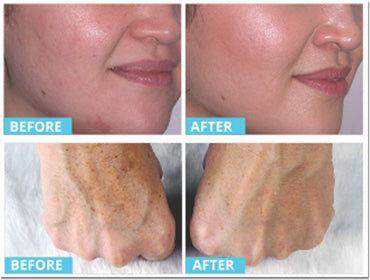Uv Light Therapy For Skin Conditions

The process is called photochemotherapy.
Uv light therapy for skin conditions. Eczema light therapy refers to the use of ultraviolet uv light to treat the skin rash and itching of eczema exposing the skin to uv light suppresses overactive skin immune system cells that. Light therapy used to treat skin conditions such as psoriasis is different from the type of light therapy used for the conditions listed above. However it s not as simple as just going out in the sun. Ultraviolet uv light therapy has been used for centuries to help in the treatment of many skin conditions disorders and diseases.
You ll probably go to your doctor s office 2 or 3 times a week for a total of 25 to 30 sessions. It makes your skin more sensitive to light. It works by slowing down cell growth and inflammation that causes skin problems to develop. It can heal chronic skin conditions like eczema or just calm them down for a while.
Light therapy treatments for the skin usually involve exposure ultraviolet light the exposures can be to small area of the skin or over the whole body surface as in a tanning bed the most common treatment is with narrowband uvb with a wavelength of 311 313 nanometers well within the range of light at which uv light generates vitamin d in the human body. Phototherapy is also used for other skin conditions such as eczema. Ultraviolet uv light a culprit behind sunburns wrinkles and skin cancer does offer benefits for some skin conditions. Ultraviolet a uva and ultraviolet b uvb rays can calm.
Phototherapy treatments use different kinds of light. Light therapy for skin disorders uses a lamp that emits ultraviolet uv light. Medical uses skin conditions. In a medical setting the same ultraviolet light that s emitted from the sun can be carefully used as therapy for certain hard to treat skin problems and other medical conditions.
Light therapy or uv phototherapy is a highly effective outpatient treatment for many skin conditions including psoriasis vitiligo scleroderma and other dermatologic disorders.














































